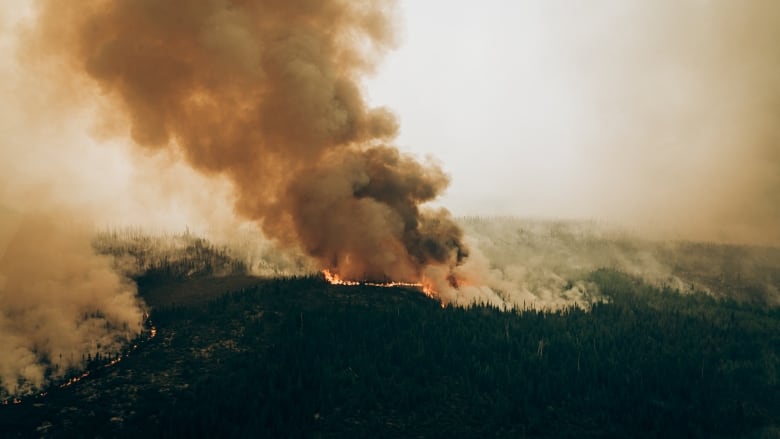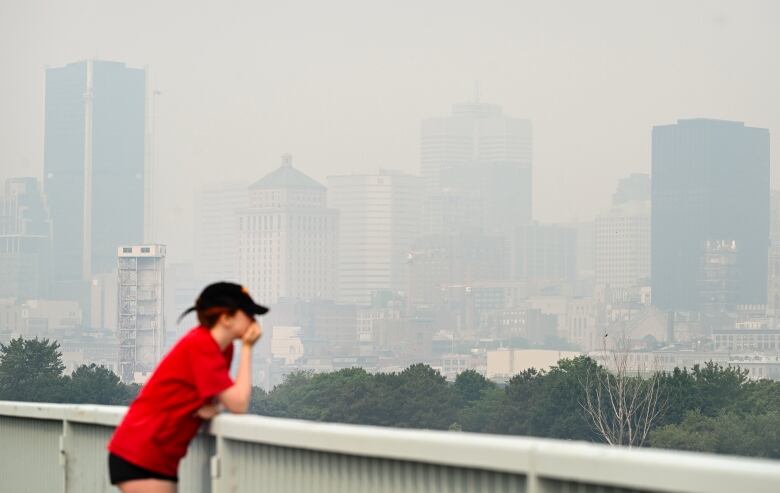Provinces and territories sign on to Ottawa's national climate adaptation strategy
Critics say Ottawa must do more to make homes resilient to climate-driven threats

As Canada suffers through one of the worst wildfire seasons on record, the federal government confirms its national climate change adaptation plan has the support of all provinces and territories.
Environment and Climate Change Minister Steven Guilbeault, other cabinet ministers and senior federal officials were in Vancouver on Tuesday to present the final document.
"I think we all recognize that Canada is not ready to face the effects of climate change. And that strategy is our response to that," Guilbeault said.
The government released a draft adaptation strategy in November. Although not much has changed in the final version, federal officials confirmed it has the blessing of the provinces, territories and national Indigenous organizations.
"Canada's new national adaptation strategy is a great step. It's a concrete plan with goals, with objectives and with targets," said George Heyman, British Columbia's environment and climate change strategy minister.
The adaptation policy is getting a much kinder reception from provinces and territories thanother aspectsof federal climate policy such ascarbon pricing, which has been the focus of political conflict for years.
The plan comes with $2billionto implement the strategy.
The plan reaffirms the commitment of governments to achieve high-level and specific targets. Those targets include eliminating all deaths due toheat waves by 2040and establishing 15 new national urban parks by2030.
The plan also states the federal government and its partners arecommittedto incorporating "additional climate change resiliency considerations" into the three Canadian building codes the National Building Code, the Canadian Highway Bridge Design Codeand the Canadian Electrical Code.
Ahead of the updated strategy'srelease, the Pembina Institute, a clean energy think-tank, called for a planto makehomes and apartments more resilient to wildfires, heat waves and other climate threats.
While Ottawa is developing a separate "Canada Green Buildings Strategy," Pembina said it should be integrated with the adaptation strategy.
Noting that many older rental units don't have air conditioning,Betsy Agar, director of Pembina'sbuildings program, called for a national adaptation strategy for homes.
"When air quality outside is poor due to forest fires, it means that people simply can't open their windows," she said.
Pembina called for a strategy that prioritizes deep building retrofitsthrough developing andimplementingnew building codes.
These retrofits would include insulating and sealing leaky buildings to make them more energy efficient, andtransitioning homes from gas-powered furnaces to more efficient and reliable heat pumps.The independent Canadian Climate Institute, meanwhile,has called for more public and private spendingto supportadaptation projects across the country.
Federal spending has 'lagged behind'
Ryan Ness, the institute's adaptation research director, said federal funding for adaptation has "lagged behind" the money Ottawa has announced for reducing emissions and investing in technologies to reduce emissions.
"While ultimately the federal government can't pay for everything, there's certainly more room ... for investment in adaptation," Ness said.
The Canadian Climate Institute's analysis projects the impact of rising emissions between 2015 to 2025 will cost the Canadian economy $25 billion a year.
"That number is only going to get bigger if we don't adapt," Ness said.

Arecent analysis by theIntact Centre on Climate Adaptation at the University of Waterloo found the United States is vastly outspending Canada per capitaon climate adaptation.Blair Feltmate, the head of the centre, said for every $1 Canada investsthe U.S. spends $3 to $4.
Canada he said needs to close gap sooner rather than later.
"Every day we don't adapt is a day we don't have," Blair said. "We have to work with greater haste to prepare for extreme weather events."













_(720p).jpg)


 OFFICIAL HD MUSIC VIDEO.jpg)
.jpg)



























































































